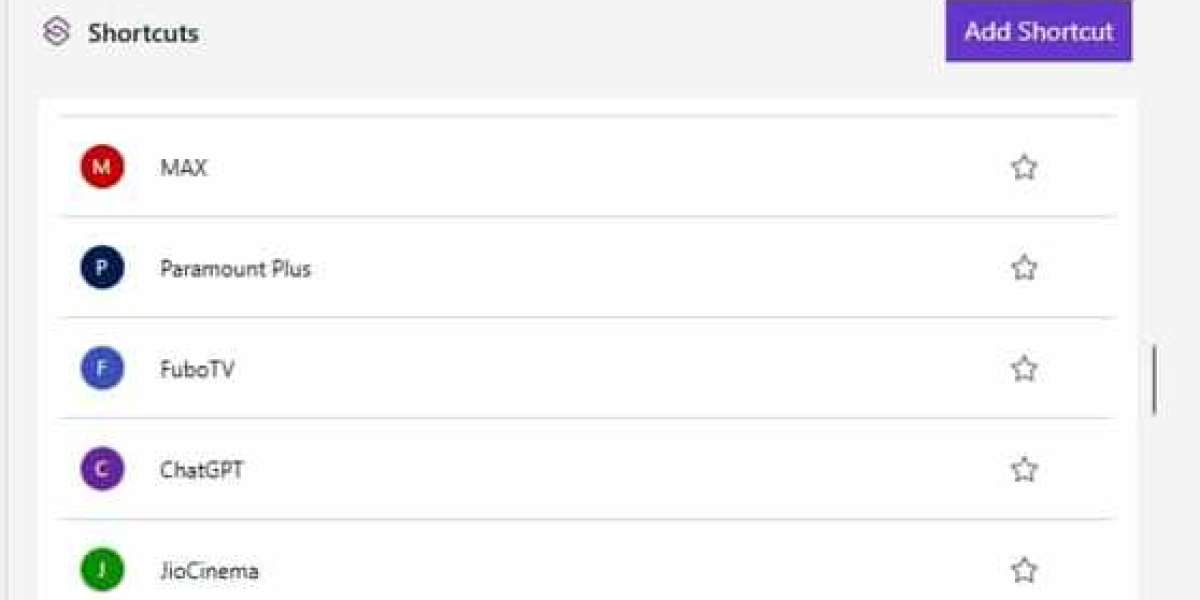
We have actually been tracking the explosive increase of DeepSeek R1, which has taken the AI world by storm in recent weeks. In this session, we dove deep into the evolution of the DeepSeek household - from the early designs through DeepSeek V3 to the development R1. We likewise checked out the technical innovations that make R1 so unique worldwide of open-source AI.
The DeepSeek Ancestral Tree: From V3 to R1

DeepSeek isn't just a single design; it's a household of progressively sophisticated AI systems. The evolution goes something like this:
DeepSeek V2:
This was the structure model which leveraged a mixture-of-experts architecture, where only a subset of experts are used at reasoning, significantly improving the processing time for each token. It likewise featured multi-head hidden attention to lower memory footprint.
DeepSeek V3:
This design introduced FP8 training techniques, which helped drive down training costs by over 42.5% compared to previous iterations. FP8 is a less precise method to keep weights inside the LLMs however can considerably enhance the memory footprint. However, training utilizing FP8 can generally be unstable, and it is difficult to obtain the preferred training outcomes. Nevertheless, DeepSeek utilizes numerous tricks and attains remarkably steady FP8 training. V3 set the phase as a highly effective model that was currently cost-effective (with claims of being 90% more affordable than some closed-source alternatives).
DeepSeek R1-Zero:
With V3 as the base, the group then presented R1-Zero, the very first reasoning-focused iteration. Here, the focus was on teaching the model not simply to generate responses however to "believe" before addressing. Using pure support knowing, the design was encouraged to produce intermediate thinking steps, for instance, taking additional time (frequently 17+ seconds) to resolve a basic issue like "1 +1."
The essential development here was making use of group relative policy optimization (GROP). Instead of depending on a standard process benefit design (which would have needed annotating every action of the reasoning), GROP compares multiple outputs from the design. By sampling several possible answers and trademarketclassifieds.com scoring them (utilizing rule-based measures like specific match for math or verifying code outputs), the system discovers to favor reasoning that results in the correct result without the requirement for specific guidance of every intermediate thought.
DeepSeek R1:
Recognizing that R1-Zero's unsupervised approach produced reasoning outputs that could be hard to check out or perhaps mix languages, the designers went back to the drawing board. They used the raw outputs from R1-Zero to create "cold start" information and after that manually curated these examples to filter and improve the quality of the reasoning. This human post-processing was then utilized to fine-tune the initial DeepSeek V3 model further-combining both reasoning-oriented support knowing and supervised fine-tuning. The result is DeepSeek R1: a design that now produces understandable, coherent, and trusted thinking while still maintaining the effectiveness and cost-effectiveness of its predecessors.
What Makes R1 Series Special?
The most remarkable element of R1 (no) is how it established reasoning capabilities without specific guidance of the reasoning procedure. It can be further enhanced by utilizing cold-start data and supervised support learning to produce understandable reasoning on general jobs. Here's what sets it apart:
Open Source & Efficiency:
R1 is open source, allowing scientists and designers to check and build upon its developments. Its expense performance is a significant selling point especially when compared to closed-source models (claimed 90% less expensive than OpenAI) that require huge calculate spending plans.
Novel Training Approach:
Instead of relying exclusively on annotated reasoning (which is both costly and lengthy), the design was trained utilizing an outcome-based approach. It started with easily proven jobs, such as math problems and coding workouts, where the accuracy of the final answer could be easily determined.
By utilizing group relative policy optimization, the training procedure compares multiple created answers to figure out which ones fulfill the wanted output. This relative scoring system enables the design to discover "how to think" even when intermediate reasoning is generated in a freestyle way.
Overthinking?
An interesting observation is that DeepSeek R1 sometimes "overthinks" basic problems. For instance, when asked "What is 1 +1?" it might spend nearly 17 seconds assessing different scenarios-even considering binary representations-before concluding with the appropriate response. This self-questioning and verification procedure, although it might appear ineffective in the beginning glimpse, could show useful in intricate jobs where much deeper thinking is necessary.
Prompt Engineering:
Traditional few-shot prompting techniques, which have worked well for gratisafhalen.be numerous chat-based models, can really break down performance with R1. The developers suggest utilizing direct problem declarations with a zero-shot technique that defines the output format plainly. This guarantees that the model isn't led astray by extraneous examples or hints that may disrupt its internal thinking process.
Getting Started with R1
For those aiming to experiment:
Smaller variations (7B-8B) can operate on customer GPUs and even just CPUs
Larger variations (600B) need significant calculate resources
Available through significant cloud companies
Can be deployed in your area through Ollama or vLLM
Looking Ahead
We're particularly fascinated by numerous ramifications:
The capacity for this method to be applied to other reasoning domains
Impact on agent-based AI systems traditionally constructed on chat models
Possibilities for combining with other guidance strategies
Implications for business AI implementation
Thanks for checking out Deep Random Thoughts! Subscribe totally free to receive new posts and support my work.
Open Questions
How will this impact the development of future reasoning designs?
Can this technique be encompassed less verifiable domains?
What are the ramifications for multi-modal AI systems?
We'll be seeing these developments closely, especially as the neighborhood starts to experiment with and build upon these strategies.
Resources
Join our Slack community for ongoing conversations and updates about DeepSeek and other AI developments. We're seeing fascinating applications currently emerging from our bootcamp individuals dealing with these models.
Chat with DeepSeek:
https://www.deepseek.com/
Papers:
DeepSeek LLM
DeepSeek-V2
DeepSeek-V3
DeepSeek-R1
Blog Posts:
The Illustrated DeepSeek-R1
DeepSeek-R1 Paper Explained
DeepSeek R1 - a short summary
Cloud Providers:
Nvidia
Together.ai
AWS
Q&A
Q1: Which model deserves more attention - DeepSeek or Qwen2.5 Max?
A: While Qwen2.5 is likewise a strong design in the open-source neighborhood, the choice ultimately depends upon your use case. DeepSeek R1 stresses innovative reasoning and a novel training approach that may be specifically valuable in jobs where verifiable logic is vital.
Q2: Why did significant companies like OpenAI choose supervised fine-tuning instead of support knowing (RL) like DeepSeek?
A: We ought to note in advance that they do use RL at the minimum in the kind of RLHF. It is most likely that models from significant providers that have reasoning abilities already use something comparable to what DeepSeek has done here, but we can't make certain. It is likewise likely that due to access to more resources, they preferred supervised fine-tuning due to its stability and the all set availability of large annotated datasets. Reinforcement knowing, although effective, can be less predictable and more difficult to manage. DeepSeek's approach innovates by applying RL in a reasoning-oriented manner, making it possible for the design to learn effective internal thinking with only minimal procedure annotation - a technique that has actually shown appealing in spite of its complexity.
Q3: Did DeepSeek utilize test-time compute techniques comparable to those of OpenAI?
A: DeepSeek R1's style emphasizes performance by leveraging techniques such as the mixture-of-experts approach, which triggers only a subset of specifications, to minimize compute throughout inference. This focus on performance is main to its cost benefits.
Q4: What is the difference between R1-Zero and R1?
A: R1-Zero is the preliminary design that finds out reasoning entirely through support learning without specific process guidance. It generates intermediate thinking steps that, while sometimes raw or mixed in language, function as the structure for knowing. DeepSeek R1, on the other hand, improves these outputs through human post-processing and monitored fine-tuning. In essence, R1-Zero supplies the unsupervised "trigger," and R1 is the polished, more meaningful version.
Q5: How can one remain upgraded with in-depth, technical research study while handling a hectic schedule?
A: Remaining present involves a mix of actively engaging with the research neighborhood (like AISC - see link to join slack above), following preprint servers like arXiv, attending pertinent conferences and webinars, and participating in discussion groups and newsletters. Continuous engagement with online communities and collaborative research projects likewise plays an essential function in keeping up with technical improvements.
Q6: In what use-cases does DeepSeek surpass models like O1?
A: The brief answer is that it's prematurely to tell. DeepSeek R1's strength, however, depends on its robust reasoning capabilities and its performance. It is especially well suited for jobs that require proven logic-such as mathematical problem resolving, code generation, and structured decision-making-where intermediate reasoning can be examined and confirmed. Its open-source nature further allows for tailored applications in research and business settings.
Q7: What are the implications of DeepSeek R1 for enterprises and start-ups?
A: The open-source and cost-efficient design of DeepSeek R1 reduces the entry barrier for yewiki.org releasing sophisticated language designs. Enterprises and start-ups can take advantage of its innovative thinking for agentic applications ranging from automated code generation and client assistance to information analysis. Its flexible implementation options-on customer hardware for smaller models or cloud platforms for bigger ones-make it an attractive option to proprietary options.
Q8: Will the model get stuck in a loop of "overthinking" if no right answer is discovered?
A: While DeepSeek R1 has been observed to "overthink" easy issues by exploring numerous thinking courses, it integrates stopping criteria and examination systems to avoid infinite loops. The reinforcement finding out framework motivates merging toward a verifiable output, even in uncertain cases.
Q9: Is DeepSeek V3 completely open source, and is it based on the Qwen architecture?
A: Yes, DeepSeek V3 is open source and served as the foundation for later iterations. It is constructed on its own set of innovations-including the mixture-of-experts method and FP8 training-and is not based on the Qwen architecture. Its design highlights effectiveness and expense reduction, setting the phase for the thinking innovations seen in R1.
Q10: How does DeepSeek R1 carry out on vision jobs?
A: DeepSeek R1 is a text-based model and does not incorporate vision abilities. Its style and training focus solely on language processing and reasoning.
Q11: Can experts in specialized fields (for example, laboratories working on treatments) apply these methods to train domain-specific designs?
A: Yes. The innovations behind DeepSeek R1-such as its outcome-based thinking training and effective architecture-can be adapted to various domains. Researchers in fields like biomedical sciences can tailor these techniques to develop designs that resolve their specific difficulties while gaining from lower calculate costs and robust reasoning abilities. It is most likely that in deeply specialized fields, nevertheless, there will still be a need for monitored fine-tuning to get reputable results.
Q12: Were the annotators for the human post-processing specialists in technical fields like computer system science or mathematics?
A: The discussion indicated that the annotators mainly concentrated on domains where correctness is quickly verifiable-such as math and coding. This suggests that know-how in technical fields was certainly leveraged to ensure the accuracy and clearness of the thinking data.
Q13: Could the design get things wrong if it counts on its own outputs for discovering?
A: While the model is created to optimize for correct responses by means of reinforcement knowing, there is always a threat of errors-especially in uncertain scenarios. However, by examining several candidate outputs and enhancing those that lead to verifiable outcomes, the training procedure reduces the possibility of propagating incorrect reasoning.
Q14: How are hallucinations reduced in the model given its iterative reasoning loops?
A: Making use of rule-based, verifiable jobs (such as math and coding) helps anchor the model's thinking. By comparing several outputs and using group relative policy optimization to reinforce just those that yield the proper result, the model is assisted far from producing unfounded or hallucinated details.
Q15: Does the design depend on complex vector mathematics?
A: Yes, advanced techniques-including complex vector math-are essential to the execution of mixture-of-experts and attention systems in DeepSeek R1. However, the main focus is on using these strategies to enable efficient reasoning instead of showcasing mathematical complexity for its own sake.
Q16: Some worry that the model's "thinking" might not be as refined as human reasoning. Is that a legitimate concern?
A: Early versions like R1-Zero did produce raw and sometimes hard-to-read thinking. However, the subsequent refinement process-where human experts curated and enhanced the thinking data-has considerably improved the clearness and dependability of DeepSeek R1's internal idea process. While it remains a developing system, iterative training and feedback have led to meaningful enhancements.
Q17: Which model variations appropriate for regional deployment on a laptop with 32GB of RAM?
A: For regional screening, a medium-sized model-typically in the variety of 7B to 8B parameters-is recommended. Larger designs (for instance, those with hundreds of billions of parameters) need significantly more computational resources and are better fit for cloud-based implementation.
Q18: Is DeepSeek R1 "open source" or does it offer just open weights?
A: DeepSeek R1 is provided with open weights, indicating that its model specifications are publicly available. This aligns with the total open-source philosophy, allowing scientists and developers to additional explore and build on its developments.
Q19: What would occur if the order of training were reversed-starting with supervised fine-tuning before without supervision support learning?

A: The current method enables the model to first check out and generate its own reasoning patterns through not being watched RL, and wiki.whenparked.com after that improve these patterns with supervised methods. Reversing the order might constrain the model's capability to discover diverse reasoning courses, potentially restricting its overall efficiency in jobs that gain from autonomous thought.
Thanks for checking out Deep Random Thoughts! Subscribe for complimentary to get new posts and support my work.









